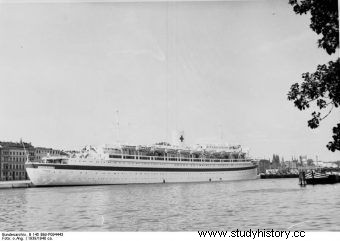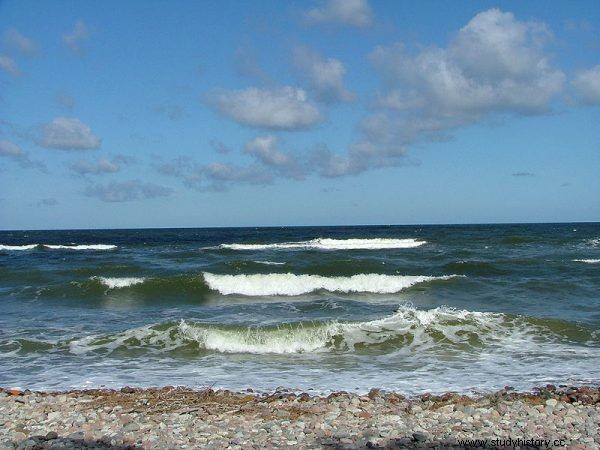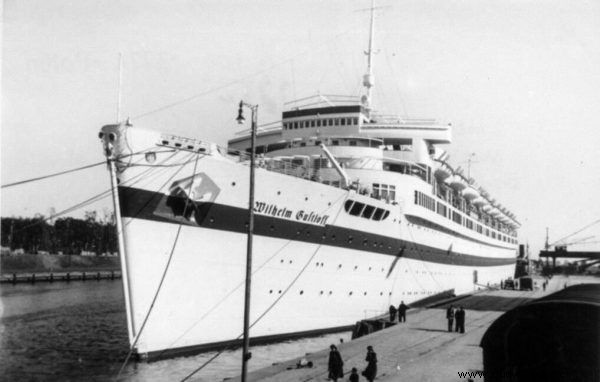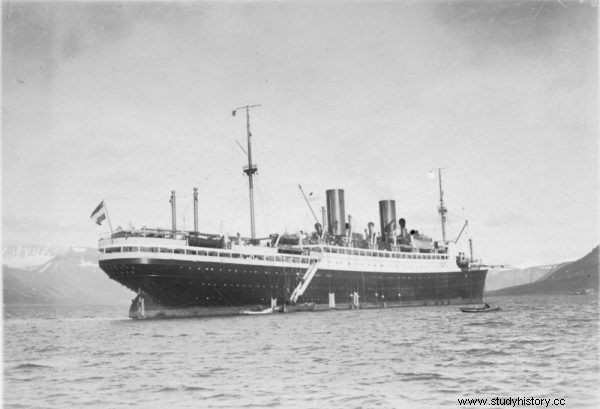We all know the story of the Titanic, but it was by no means the greatest catastrophe in history. The Baltic Sea, although smaller than the Atlantic, is a real ship cemetery - especially from the Second World War.
We associate the Baltic Sea with hot summer, beach and holidays. Not everyone is aware that it is one of the largest water cemeteries in the world. At its bottom, approx. 3 thousand. wrecks from different historical eras. On his last voyage on the Baltic, among others, Swedish "Solen" sunk during the Battle of Oliwa in 1627.

MS "Wilhelm Gustloff" in Szczecin as a hospital ship, 1939
However, mainly underwater tombs from World War II are of interest. The catastrophes of German ships from that period, such as the "Wilhelm Gustloff", "Acrona" or "Steuben", are considered the most tragic in history. And although , thanks to the Hollywood production, the story of "Titanic" overshadowed the Baltic tragedy of the first of these ships, the number of victims leaves no doubt. It is estimated that about 1,500 people died on "Titanic", over 9,000 on "Gustloff".
The black series of disasters began in mid-January 1945. The Red Army launched an offensive against East Prussia. Faced with the threat, the civilians decided to flee. A chance to get west were ships moored in ports, for example in Piława, where "Steuben" stood, or in Gdynia, where "Wilhelm Gustloff" was located. The entire operation was called "Hannibal". It was the largest evacuation by sea in history - one million refugees and 300 thousand people were transported. soldiers.

About 3,000 wrecks from various historical periods have been located on the bottom of the Baltic Sea.
The only free way to the ports was through the frozen Vistula Lagoon, regularly fired at by the Soviet air force. Those who managed to reach their destination faced another fight, this time for a place on the ship. And these were allocated primarily to soldiers, privileged people and large families.
The last moments of "Wilhelm Gustloff"
The "Wilhelm Gustloff" was a Nazi dream ship, which was used by the German elite even before the war. However, on January 30, 1945, its passengers did not go on another vacation - they fought for their lives, fleeing the Red Army. The temperature was minus 20 degrees Celsius. There were about 10,000 on board. people. The crew was aware of the dangers in the Baltic Sea.
Gustloff's captain, Friedrich Petersen, had a choice of either a mined route along the coast or a more distant route from the coast line 58. This one was cleared of mines, but Soviet submarines posed a danger to passing through it. It was on this route that "Gustloff" started. As it turned out later - on his last voyage.

"Wilhelm Gustloff" was a Nazi dream ship, which was used by the German elite before the war
The sailors knew that they should pass unnoticed. However, when night fell, the decision was made to turn on the lights, fearing a collision with another ship on the captain's bridge. After an hour, they decided to put them out, but it was too late. The ship was noticed by the Soviet submarine S-13, captained by Alexander Marinesko. He gave immediate orders to pursue the ship. At. At 21:16 three torpedoes were launched towards Gustloff. Panic broke out on board.
People trampled and pushed each other trying to get to the lifeboats. These, however, were frozen and icy, which delayed the evacuation. This is how these moments were described by Ewa Boden, who managed to survive the catastrophe:
We climbed the rigging. First, my mother gave me a 6-year-old sister. I sat her on her feet. If it were my baby, I would probably put it between my feet. I held out my hand to my mother, but my mother was gone. There was water everywhere. I wanted to shake my sister's hand or hold her, but my sister was gone. They both drowned.
65 minutes after the attack, the ship sank. The sea depths consumed over 9 thousand. victims. Only about 1,000 people survived.
"Steuben" like "Gustloff"
However, this is not the only disaster to which the S-13 crew contributed. Ten days later, another unit - the SS "Steuben" - fell victim to them. Like the Gustloff, it was a passenger ship and had the same task. It served as a last resort for refugees, incl. from East Prussia. On the night of February 9-10, 1945, the crew of Captain Marinesko spotted the cruise ship near Ustka.
There were approx. 5,000 on board at that time. passengers. After the chase at On the first in the morning, Marinesko ordered the launch of two torpedoes at the German unit. Both hit the target. Panic and unfavorable weather conditions made rescue impossible. The ship tilted to the side very quickly, and after just seven minutes it was underwater. Only 300 people survived.

The SS Steuben wreck was discovered by ORP Arctowski in May 2004.
The sinking of the MS "Goya" transport was a bit different. For Captain Joachim Plunnecke, it was going to be another routine journey. Earlier, as part of the operation "Hannibal", he transported almost 20,000 people from east to west. people. Unfortunately, the voyage on which he set off on April 16, 1945, escorted by two minesweepers, turned out to be his last. In absolute darkness and silence, the convoy found itself near the Rozewie lighthouse. There was also a Soviet L-3 submarine nearby.
The Russians immediately noticed the ship and gave chase. 52 minutes after the reconnaissance of the German unit, captain Vladimir Konovalov gave the order to sink the transport. 4 torpedoes launched that sent the vessel with passengers into the depths. 6,700 people died as a result of the attack. Only 180 survived.
These are just three of the many naval tragedies of World War II. To this day, there are graves of German ships from that period at the bottom of the Baltic Sea. The wreck of the "Gustloff" enjoyed the greatest interest - in 1948 the Russians took out everything valuable, incl. the bell, which is today in the Museum of the Second World War in Gdańsk. The remaining underwater tombs were discovered late - for example, ORP "Arctowski" came across the SS "Steuben" only in May 2004.
Anyway, you are not allowed to dive near sunken ships without a special permit. Only from time to time fishing nets get caught on the elements of ships resting on the seabed, reminding us that the Baltic Sea is one of the largest water cemeteries in the world.
